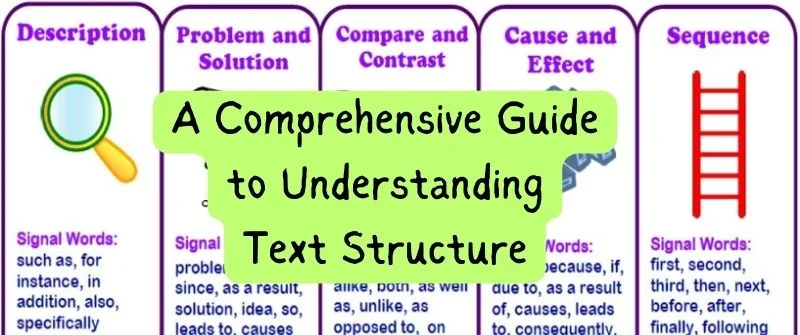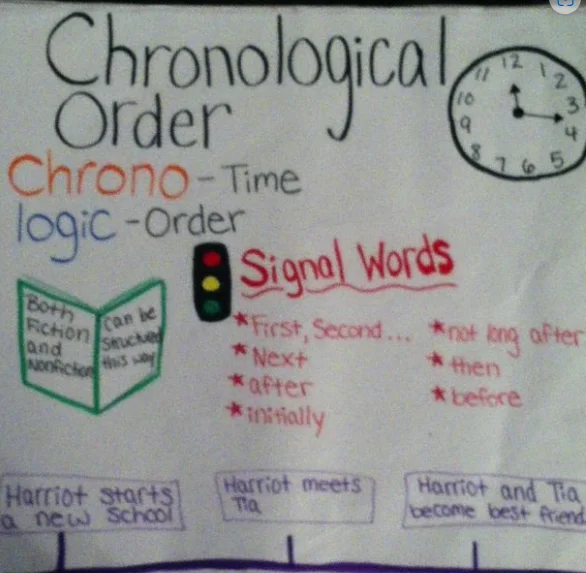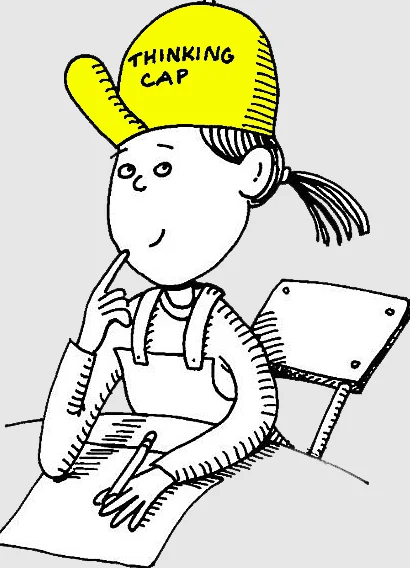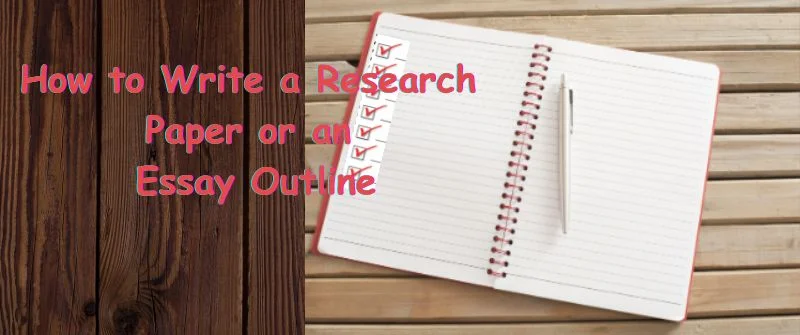Understanding Text Structure: A Comprehensive Guide with 8 Examples

Text structures are the architectural framework of written communication, shaping how information is organized and presented.
In this comprehensive guide, we will explore the fundamentals of text structures, answering crucial questions:
Text structures are the organizational blueprints that authors employ to arrange their ideas systematically. They are the underlying structure that gives coherence and order to written content.
Understanding and using text structures is vital for effective communication. They transform chaotic content into a comprehensible narrative, making it accessible and engaging for readers.
1. Chronological Text Structure

Chronological text structure arranges information in sequential order, following a timeline. It is like telling a story from start to finish, ensuring that events or ideas unfold in the order they occurred.
First, historical accounts, biographies, and step-by-step guides often use chronological structure. These texts take readers on a journey through time, making it easy to track developments.
Choose this structure when you want to emphasize a clear progression of events or when you need to guide readers through a process in a logical, time-based sequence.
It’s a powerful tool for storytelling and explaining sequences of actions or historical events.
2. Compare and Contrast Text Structure
The compare and contrast text structure involves examining the similarities and differences between two or more subjects, ideas, or concepts.
It is a method of highlighting commonalities and distinctions, providing readers with a comprehensive understanding of the topics being compared.
Texts that compare and contrast often include essays, research papers, and product reviews. They present information side-by-side, allowing readers to discern relationships and disparities easily.
This structure is valuable when systematically analyzing multiple subjects or ideas, fostering a deeper understanding. It’s commonly used in academic, analytical, or evaluative contexts to facilitate informed comparisons.
3. Cause and Effect Text Structure
Cause and effect text structure elucidates the relationship between actions (causes) and their outcomes (effects). It unveils the underlying reasons behind events, helping readers grasp the connections and consequences.
Scientific research papers, historical analyses, and articles on social issues frequently employ this structure. It dissects the causal factors leading to particular outcomes or phenomena.
Choose this structure when you must elucidate the reasons behind specific events, explore the consequences of actions, or examine the ripple effects of decisions.
It is a valuable tool for comprehending and explaining the intricate web of causation in various contexts.
4. Problem-Solution Text Structure

The problem-solution text structure is a framework that identifies a specific problem or issue and then offers viable solutions or strategies to address it.
It presents a clear path from recognizing an obstacle to resolving it effectively.
Problem-solving essays, policy proposals, and self-help guides frequently utilize this structure. They pinpoint challenges and provide actionable solutions, offering readers practical guidance.
This structure is ideal for tackling real-world issues, proposing solutions, or guiding readers in resolving problems.
It is applicable in persuasive and informative writing, addressing diverse topics, from societal dilemmas to personal challenges.
5. Descriptive Text Structure
Descriptive text structure immerses readers in rich, vivid details, painting a clear and evocative picture of a subject, scene, or concept. It appeals to the senses and emotions, making content come alive.
Travelogues, creative narratives, and product reviews frequently employ this structure. They use descriptive language to provide readers with sensory experiences, fostering a deep understanding or appreciation.
Choose this structure to create a sensory and emotional connection with your audience, evoke vivid imagery, or convey a profound sense of place or experience. It’s particularly effective in storytelling, travel writing, and descriptive essays.
6. Sequential Text Structure
Sequential text structure, or chronological or procedural structure, arranges information in a step-by-step order, guiding readers through a series of actions or events logically. It’s akin to providing a roadmap for understanding processes.
Recipes, instructional manuals, and how-to guides often utilize this structure. They break down complex tasks or procedures into manageable, ordered steps, facilitating easy comprehension.
Choose this structure when explaining processes, procedures, or events in a systematic, time-based sequence. It’s invaluable for instructional content, technical documentation, and any context where clear, ordered guidance is essential.
7. Spatial Text Structure

Spatial text structure organizes information based on physical or spatial relationships, providing readers with a clear understanding of how elements are positioned or interconnected in space.
It leverages descriptive language to create mental images of a location or layout.
Travel guides, architectural blueprints, and geographical descriptions frequently employ this structure.
They use spatial cues to convey a sense of place, guiding readers through spaces or landscapes.
Choose this structure to emphasize the physical arrangement or layout of elements within a given space.
It effectively conveys spatial relationships, describes settings, and provides detailed, location-based information.
8. Compare and Contrast (Extended)
Extended compare and contrast delves deeper into the intricate nuances of two or more subjects, analyzing their similarities and differences exhaustively.
It requires a meticulous examination, often uncovering subtleties that standard comparisons might overlook.
Academic research papers, in-depth analyses of complex topics, and comprehensive product evaluations are indispensable for extended compare and contrast. It scrutinizes multifaceted aspects and intricate relationships between subjects.
To excel in extended comparison, employ robust research, consider multiple dimensions, and offer insightful insights. Diving into finer details and exploring various angles will yield a thorough comparative analysis.
How to Use Text Structures in Different Writing Styles
In fiction, authors use text structures to shape narratives through chronological storytelling, flashbacks, or descriptive passages.
These structures help create suspense, reveal character motivations, and engage readers emotionally.
Non-fiction relies on text structures to present factual information logically. Cause and effect, problem-solution, and compare and contrast structures are shared. They enhance clarity and reader comprehension, making complex topics accessible.
Academic writing often uses text structures to present research findings, arguments, and analyses. It demands a clear, organized approach, with structures like deductive reasoning or the scientific method ensuring rigor.
In business and technical writing, clarity is paramount. Sequential structures help explain processes, while descriptive designs can simplify complex concepts. These structures enhance communication in professional contexts, ensuring precision and understanding.
Tips for Mastering Text Structures
Mastering text structures is a valuable skill for writers across various genres. It enhances communication, readability, and the overall impact of your writing.
Here are six essential tips to help you become proficient in using text structures effectively:
Planning Your Writing with Text Structures in Mind

Begin your writing process by considering your content’s most suitable text structure.
Determine whether chronological, cause and effect, problem-solution, or another structure best aligns with your goals. A clear plan at the outset sets the stage for a well-organized piece.
Revision and Editing Techniques
Effective revision and editing are crucial for refining text structures. After completing your initial draft, review it with a critical eye.
Ensure that the chosen structure is consistently applied and smooth transitions between sections.
Eliminate redundancies and fine-tune your writing for clarity and coherence.
Common Pitfalls to Avoid
Be aware of common pitfalls associated with text structures. These may include veering off-topic, overusing a single structure, or neglecting to provide adequate context or support.
Stay vigilant to maintain a balanced and well-structured piece.
Engage Text Structure Exercises
Practice makes perfect. Engage in text structure exercises to hone your skills. Write short pieces using different structures to become comfortable with their nuances.
Experimentation will help you develop a strong sense of when to use each structure effectively.
Analyze Texts for Their Structures
Analyze texts across various genres to identify their underlying structures.
Please pay attention to how authors employ these structures to convey their messages. This analytical approach will deepen your understanding and enable you to adapt similar techniques to your writing.
Develop Your Text Structuring Skills
Text structuring is a skill that improves with time and effort. Seek feedback from peers or writing professionals to gain insights into your strengths and areas for improvement.
Attend writing workshops or courses focusing on text structures to refine your abilities further.
Real-World Examples
Study published works by renowned authors to observe how they employ text structures.
For instance, analyze how Charles Dickens uses descriptive structures in his novels to evoke vivid imagery or how scientific researchers employ cause-and-effect structures to present their findings precisely.
Read news articles critically, identifying the text structures used to convey information.
Observe how journalists employ chronological structures for reporting events, problem-solution structures when discussing societal issues, or compare and contrast structures when analyzing trends or policies.
Explore case studies that showcase the effective use of text structures in various contexts.
Investigate how businesses utilize problem-solving structures in marketing campaigns or how educators employ sequential structures for instructional materials.
These real-world examples offer valuable insights into the practical application of text structures.
Conclusion
In this comprehensive guide, we’ve embarked on a journey through the intricate world of text structures.
We explored the fundamental structures like chronological, cause and effect, problem-solution, and compare and contrast, each serving as a powerful tool in shaping written content.
Additionally, we ventured into extended comparisons and spatial and sequential structures and delved into using text structures across various writing styles.
Armed with these insights, writers can now confidently navigate the terrain of communication, crafting engaging, organized, and impactful content that captivates readers and conveys messages effectively.

Josh Jasen or JJ as we fondly call him, is a senior academic editor at Grade Bees in charge of the writing department. When not managing complex essays and academic writing tasks, Josh is busy advising students on how to pass assignments. In his spare time, he loves playing football or walking with his dog around the park.




